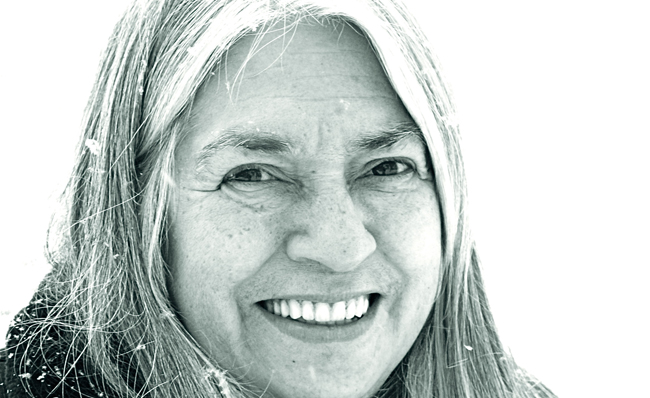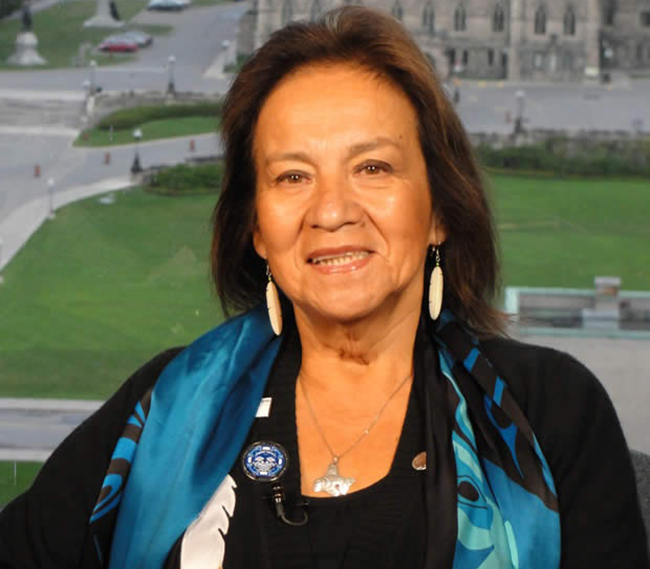Order of Canada recipients well-deserving


By Rick Garrick
Jeannette Corbiere Lavell and Lee Maracle are among 125 people who were recently appointed to the Order of Canada by Governor General Julie Payette on the recommendation of the Advisory Council for the Order of Canada.
Corbiere Lavell, from Wiikwemkoong, says it’s “just awesome” to be appointed as a Member of the Order of Canada for her leadership in advocating for Indigenous women’s rights throughout Canada, notably for advancing gender equality under the law.
“It’s one of the big perks right now in my life to be able to receive this award after all this time of being active at the community level,” Corbiere Lavell says. “I was kind of raising questions and stirring up difficulties for others, so to get this recognition with the Order of Canada, I think it’s just absolutely amazing.”
Corbiere Lavell raised the issue of how status First Nations women were losing their status rights when they married a non-status man even though status First Nations men were able to keep their status rights when they married a non-status woman in 1970. In addition, the children of the marriage between status First Nations women and non-status men were losing their status rights even though non-status women who married status First Nations men and their children were given status rights.
“One of the things that we should realize is that the battle is not over to rectify the Indian Act so that it is non-discriminatory to Indigenous women specifically and to others as well,” Corbiere Lavell says. “This started in 1970 when I married David Lavell and received a letter from Indian and Northern Affairs (Canada) that said no question, no choice on my part, that I was no longer a member of my community and gave me a cheque for $35.”
Corbiere Lavell says she knew about human rights at the time through her work at the Indian Friendship Centre in Toronto and the Company of Young Canadians, so after talking it over with her family and other community members she challenged the Indian Act on the basis that Section 12 (1) (b) of the Indian Act was discriminatory.
“The challenge went right up to the Supreme Court of Canada,” Corbiere Lavell says, noting that the Federal Court of Appeal ruled unanimously in her favour in 1971 but the decision was appealed to the Supreme Court of Canada. “Unfortunately, we lost at the Supreme Court in 1973 by (a 5-4 decision).”
The Supreme Court decision held that the Bill of Rights did not apply to that section of the Indian Act.
“But by then Indigenous women across Canada had become organized,” Corbiere Lavell says. “We formed our own Indian women organizations and were speaking out and writing letters and just making people aware. So that happened from 1973 right up until 1985.”
The federal government repealed Section 12 of the Indian Act in 1985. The main provisions of the Canadian Charter of Rights and Freedoms regarding equality rights (section 15) came into effect in 1985.
“Under the Charter, we were able to ask to be reinstated back to our communities,” Corbiere Lavell says, noting that Mary Two-Axe Early, who began speaking out on the issue in 1966, was the first to apply for her status back to her community. “(It) was gratifying to know that our fight and all the hardships we did were not in vain, that it did make a difference.”
Maracle, an award-winning author and teacher, was appointed as an Officer of the Order of Canada for her contributions to Canada’s literary landscape and for her influential voice in cultural relations between Indigenous and non-Indigenous peoples in Canada.
“It’s a little on the strange side — I’ve been fighting colonialism since I was about 14,” says Maracle, a member of the Sto:lo Nation and granddaughter of Chief Dan George. “But at the same time I am glad for the people who nominated me and happy to accept their vote of confidence in me for the work that I do.”
Maracle began speaking on a variety of issues when she was 15, noting that her family was involved in social activism and the struggle for land rights and anti-colonial battles.
“I think my aunt said it best: “Our family doesn’t do anything without a cause,’” Maracle says. “We were all active in the caring for the Earth and in the struggle for sovereignty and justice in Canada.”
Maracle began writing poetry on the day she learned how to read and was first published in 1976.
“I always wanted to write,” Maracle says. “What I was trying to achieve was to be able to tell a story the way that I felt it in the longhouse. The first one I think that I succeeded with that was Ravensong (in 1993), because the structure and the tonality and the sound of it all felt the same as it did in the language to me.”
Maracle says another goal was to tell an old story as though it was happening now.
“That again was Raven Song and all the novels that followed thereafter,” Maracle says, noting that she wrote the double-headed sea serpent story as a novel in Celia’s Song, which was published in 2014. “The first response of my children to Ravensong was to thank me because they could see who we are through that story. They had never read a story up to that point where they could see themselves in the story.”
Maracle currently teaches at the University of Toronto and is working on a novel.


